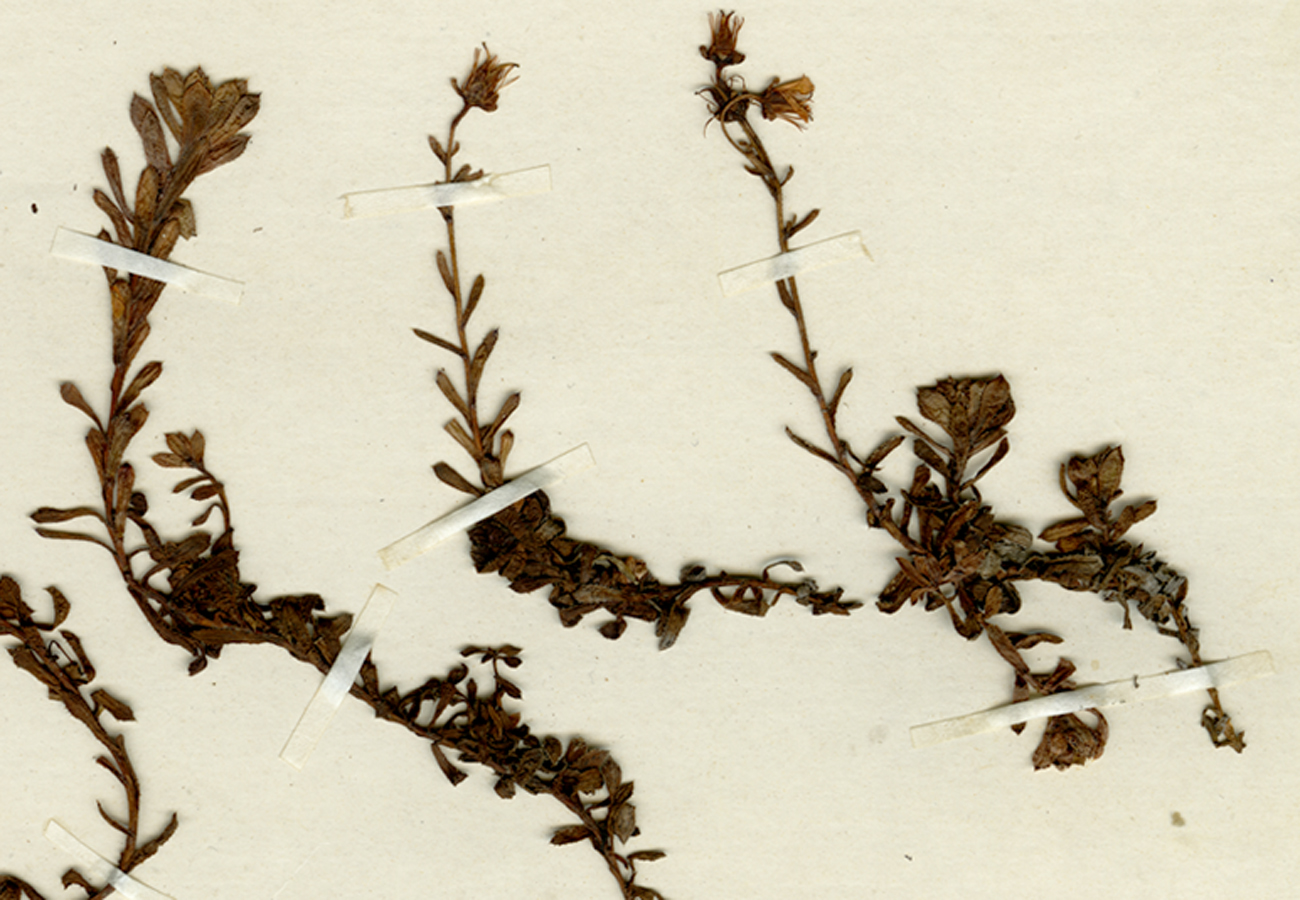Abstract
We discussed the typification of the name Saxifraga yuparensis applicable to an alpine plant described from Hokkaido, northern Japan. The holotype is not found in the cited herbarium and other herbaria related to Nosaka. No isotypes or paratypes were cited in its protologue, and no other uncited specimens are unambiguously deduced to have been used by Nosaka when describing the species and do not comprise the original material (Art. 9.4 of the Botanical Code). Therefore, an illustration (Fig. 11 in Nosaka 1974) published as part of the protologue is the only original material that can be chosen in lectotype designation in conformity with Art. 9.12. The illustration is here designated as the lectotype for the name.
References
DeChaine, E.G. (2014) Introducing the spotted saxifrages: Saxifraga sect. Bronchiales, sect. nov. (Saxifragaceae). Rhodora 116: 25–40. https://doi.org/10.3119/13-09
Horie, K. (2015) Dr. Shiro Nosaka (1933-2014). Journal of Japanese Botany 90: 364–365.
Hultén, E. (1929) Flora of Kamtchatka and the adjacent islands, 3. Kungliga Svenska vetenskaps akademiens handlingar ser. 3 vol. 8 (1): 12.
Iwatsuki, K. & Kato, T. (1994) Red data plants—a pictorial of Japanese flora facing extinction. Takarajimasha, Tokyo, 208 pp.
Jussieu, A.L.d. (1789) Genera plantarum :secundum ordines naturales disposita. Apud viduam herissant et theophilum barrios, Paris, 498 pp. https://doi.org/10.5962/bhl.title.127435
Linnaeus, C. (1753) Species Plantarum 1. Laurentii Salvii, Holmiae, 560 pp.
Ministry of the Environment, Government of Japan (2020) Ministry of the Environment red list 2020. Tokyo, Ministry of the Environment, Government of Japan. Available from: https://www.env.go.jp/press/files/jp/114457.pdf (accessed 11 August 2021)
Miyabe, K. & Kudô, Y. (1917) Materials for a flora of Hokkaido VII. Sapporo Natural History Society 6: 170–171.
Nishikawa, Y., Miyaki, M. & Hori, S. (1992) Community formations of Saxifraga yuparensis and S. nishidae in the rocky ridge region of Mt. Yubari. Report of Hokkaido Institute of Environmental Sciences 19: 61–66.
Nosaka, S. (1974) The Phanerogam Flora of Mt. Yûpari, Prov. Ishikari, Hokkaido, Japan. Journal of the Faculty of Science, Hokkaido University Series 5 Botany 9 (2): 55–300.
Nosaka, S. (1980) The plants of genus Saxifraga in Hokkaido. Hoppousansou 1: 2–10.
Sato, K. (2007) Geobotanical study on the alpine vegetation of Hokkaido, Japan. Hokkaido University Press, Sapporo, 688 pp.
Shimizu, T. (1983) The new alpine flora of Japan in color II. Hoikusha, Tokyo, 331 pp.
Shimizu, T., Kadota, Y. & Kihara, H. (2014) Alpine flowers of Japan. Yama-kei publishers, Tokyo, 512 pp.
Siplivinsky, V. (1971) Generis Saxifraga L. species asiaticae e sectione Trachyphyllum Gaud. Novitates Systematicae Plantarum Vascularium 8: 147–158.
Takahashi, H. (2015) Saxifraga yuparensis. In: Yahara, T., Fujii, S., Ito, M. & Ebihara, A. (Eds.) Red data plants. Yama-kei Publishers, Tokyo, p. 314.
Tamura, S., Fukuda, T., Pimenova, E.A., Petrunenko, E.A., Krestov, P.V., Bondarchuk, S.N., Chernyagina, O.A., Suyama, Y., Tsunamoto, Y., Matsuo, A., Tsuboi, H., Takahashi, H., Sato, K., Nishikawa, Y., Shimamura, T., Fujita, H. & Nakamura, K. (2018) Molecular and cytological evidences denied the immediate-hybrid hypothesis for Saxifraga yuparensis (sect. Bronchiales, Saxifragaceae) endemic to Mt. Yubari in Hokkaido, northern Japan. Phytotaxa 373 (1): 53–70. https://doi.org/10.11646/phytotaxa.373.1.2
Toyokuni, H. (1988) Alpine flowers of Japan. Yama-kei Publishers, Tokyo, 719 pp.
Turland, N.J., Wiersema, J.H., Barrie, F.R., Greuter, W., Hawksworth, D.L., Herendeen, P.S., Knapp, S., Kusber, W.-H., Li D.-Z., Marhold, K., May, T.W., McNeill, J., Monro, A.M., Prado, J., Price, M.J. & Smith, G.F. (Eds.) (2018) International Code of Nomenclature for algae, fungi, and plants (Shenzhen Code) adopted by the Nineteenth International Botanical Congress Shenzhen. China, July 2017. Regnum vegetabile 159. Koeltz, Glashütten.
Umezawa, S. (2004) Flora of the Yubari & Hidaka Range, Hokkaido. Hokkaido Shimbun Press, Sapporo, 239 pp.


